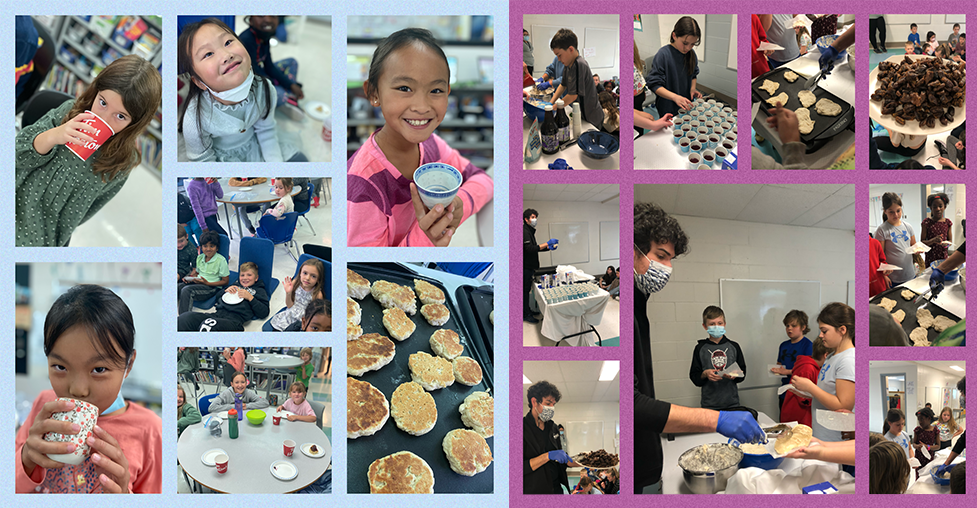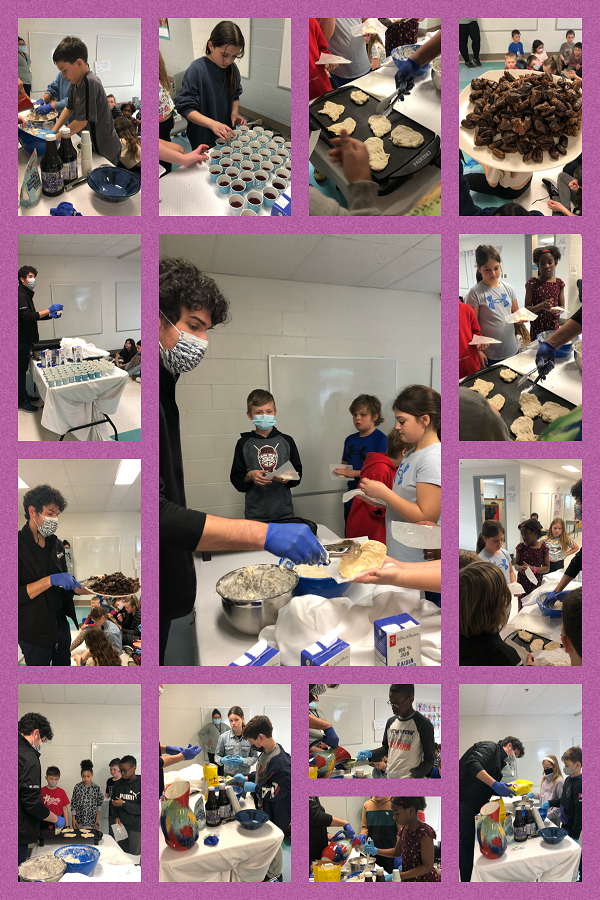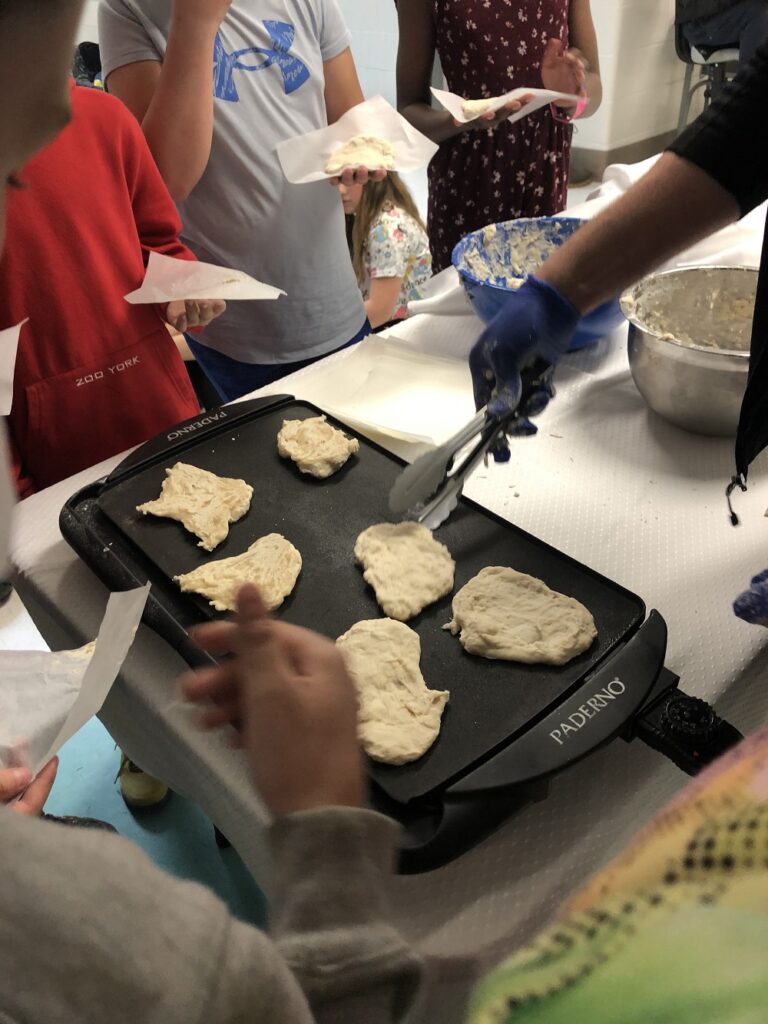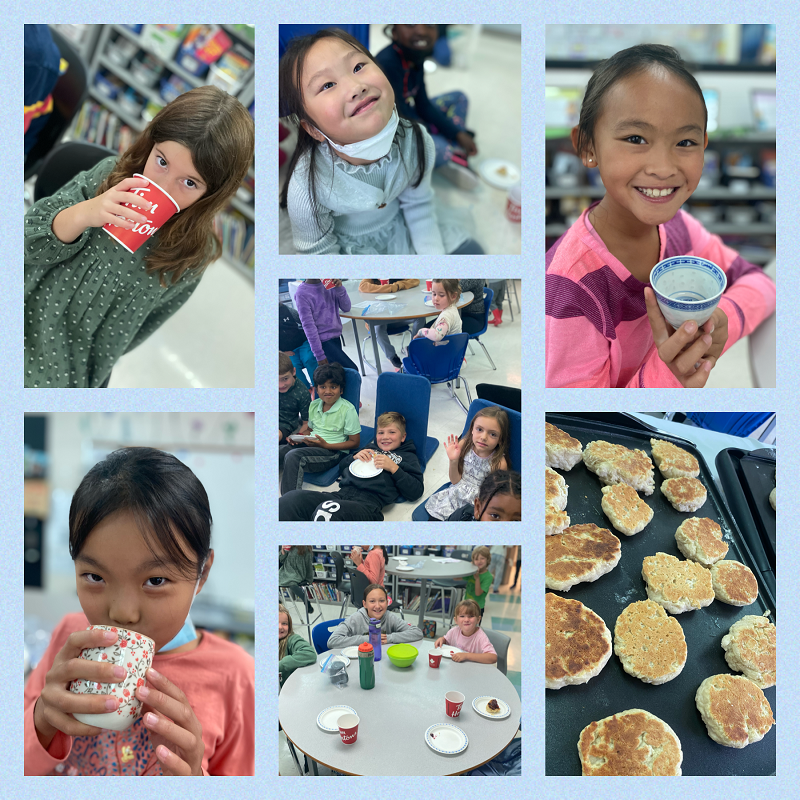Cross-curricular baking provides authenticity in learning

By Andrew Arcello, Grade 5 Teacher OCSB
I discovered baking as a cross-curricular tool in an unanticipated way. I arrived in Turkey to teach grades 5-12 music but learned instead that I was teaching preschool to Grade 2. I had to adapt! I drew on my love of baking to create hands-on activities to engage these young students.
Since then, I have realized baking works with so much—math, science, social studies, religion, history. Kids love to connect what they’re learning to something tangible. For example, when Queen Elizabeth passed away, we connected to history by looking at food and how it brings people together. We made griddle scones and had tea to honour the Queen and discuss her legacy. Feedback from students and parents tell me it was a memorable learning experience they want to repeat.
Why bake with your students?
Throughout history, food has brought people together! In today’s busy world, it seems that one of the few times families and friends are sitting together and talking without devices is at mealtime. I think humans have a deep connection to food and student love process projects. It just makes sense that cooking is a gateway to deep learning.
Baking in class is a way to achieve the 6Cs of 21st-century learning (character, citizenship, collaboration, communication, creativity, critical thinking). You can draw on each of those deep learning competencies with one activity. Baking leads to conversations and thinking that relate to the curriculum and you can combine activities. Depending on the recipe, students can work in groups.
For example, when the students were making their scones, while they waited for me to check their ingredients, they did a reading comprehension about the Queen’s favourite foods. However you organise your baking time, it is helpful to have a related activity ready to keep structure throughout.
A great thing about classroom baking is the opportunity to connect students to where their food comes from and that there is a whole wider community out there that makes our lives possible through food. You can talk about every activity and all the hands involved in producing the food we enjoy, starting with planting the seeds. Students begin to realize when you talk about what’s available to us that food involves the whole world working together. It naturally sparks conversations and kids start to understand that they’re part of the world around them. It provides an authentic learning experience about food, community and global citizenship.
Tips for teachers
- For teachers who are hesitant to bake in the classroom because they don’t want the mess, I can assure you that students will volunteer to clean up when they feel they’re accomplishing something connected to the real world. I find that having a conversation about community before the activity is a huge help—decide on jobs and tasks ahead of time.
- If baking is outside your comfort zone, start small. Let families know what you’ll be doing and ask for donations of ingredients (consider adding a wishlist of baking pantry items to a class newsletter). It gets everyone involved and makes it a true community experience.
- The sky’s the limit here, so get those creative juices flowing! Are you in a number sense unit? Have the students try to double or halve the recipe as a challenge! Are you studying changes in matter? Add on a food experiment like a baking soda/vinegar volcano! Are you working on procedural writing? Have students take jot notes while you do the demonstration and see if they can write the recipe! Are you working on descriptive writing? Ask the students to write fancy restaurant menu style descriptions for your final product! You can do any or all of this while discussing the importance of agriculture and the food industry!
- If your school doesn’t have ovens, your class can prepare the recipe up to the baking part and you can send home instructions; ask parents to send back a picture of their child enjoying their baking. Alternatively, you can stick to griddle recipes to start since these can be done right in your classroom.
I have a recipe for a basic loaf of artisan bread that you cannot mess up. It’s a starting point for baking with your students – show them what it is to be a lifelong learner. We have a responsibility as educators to demonstrate risk-taking and reflection. And…if the bread is a colossal disaster (which it won’t be), it’s still a learning experience and an authentic way to model how to handle setbacks.




In addition to Andrew’s great artisan bread, you may like to try a few recipes from Good in Every Grain that are suitable for classrooms.
- Combine to Kitchen: Whole-grain granola
- Combine to Kitchen – Cornbread Muffins with Chives
- Protein Power Balls
- Scotch Teas
- Sweet Soy Butter Squares
- Oat and Whole Wheat Bread (takes 5 ½ hours)
- Combine to Kitchen: Nut-free soy energy bites
- Pizza Pinwheels
- Ghost Pancakes



